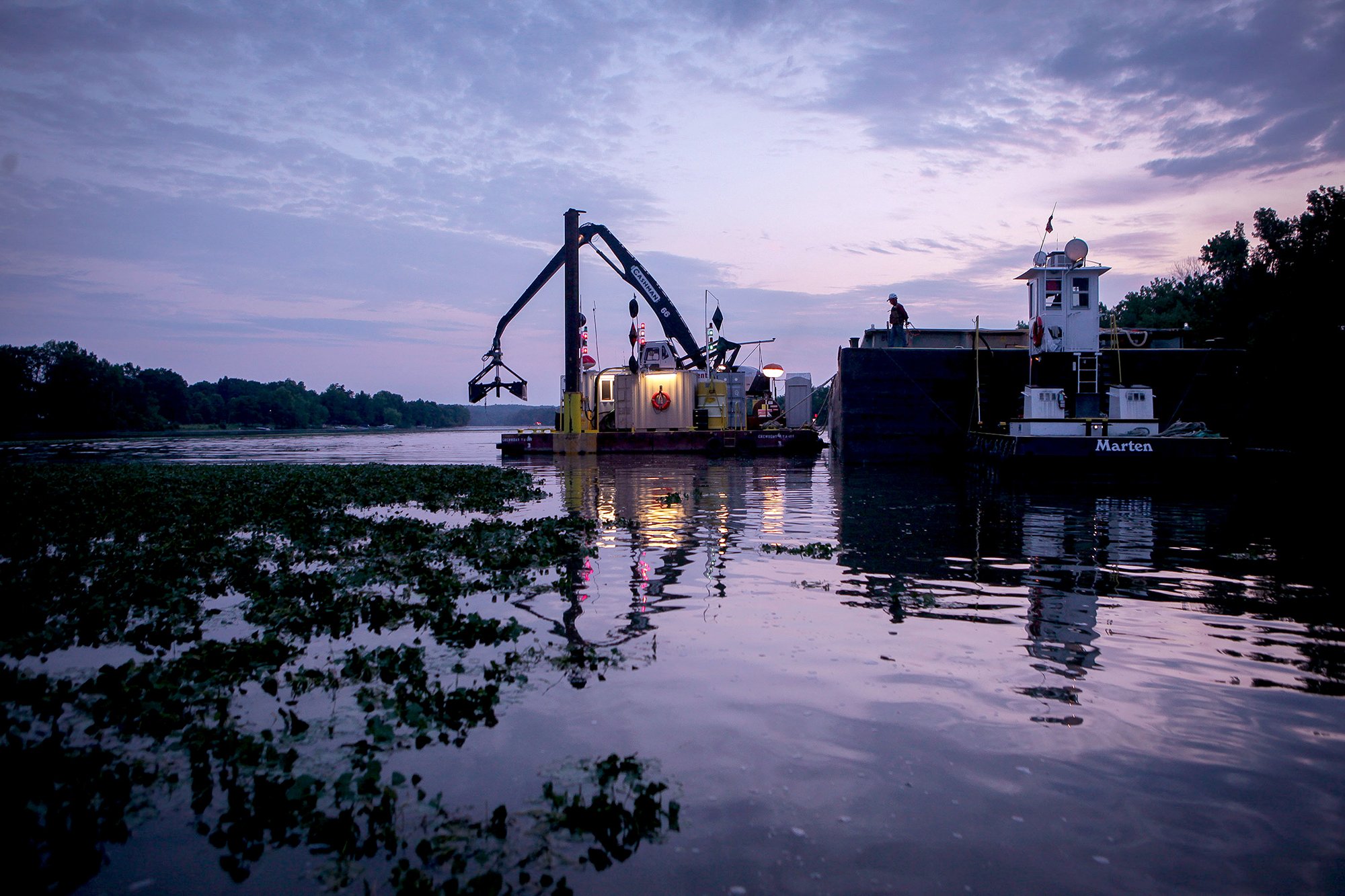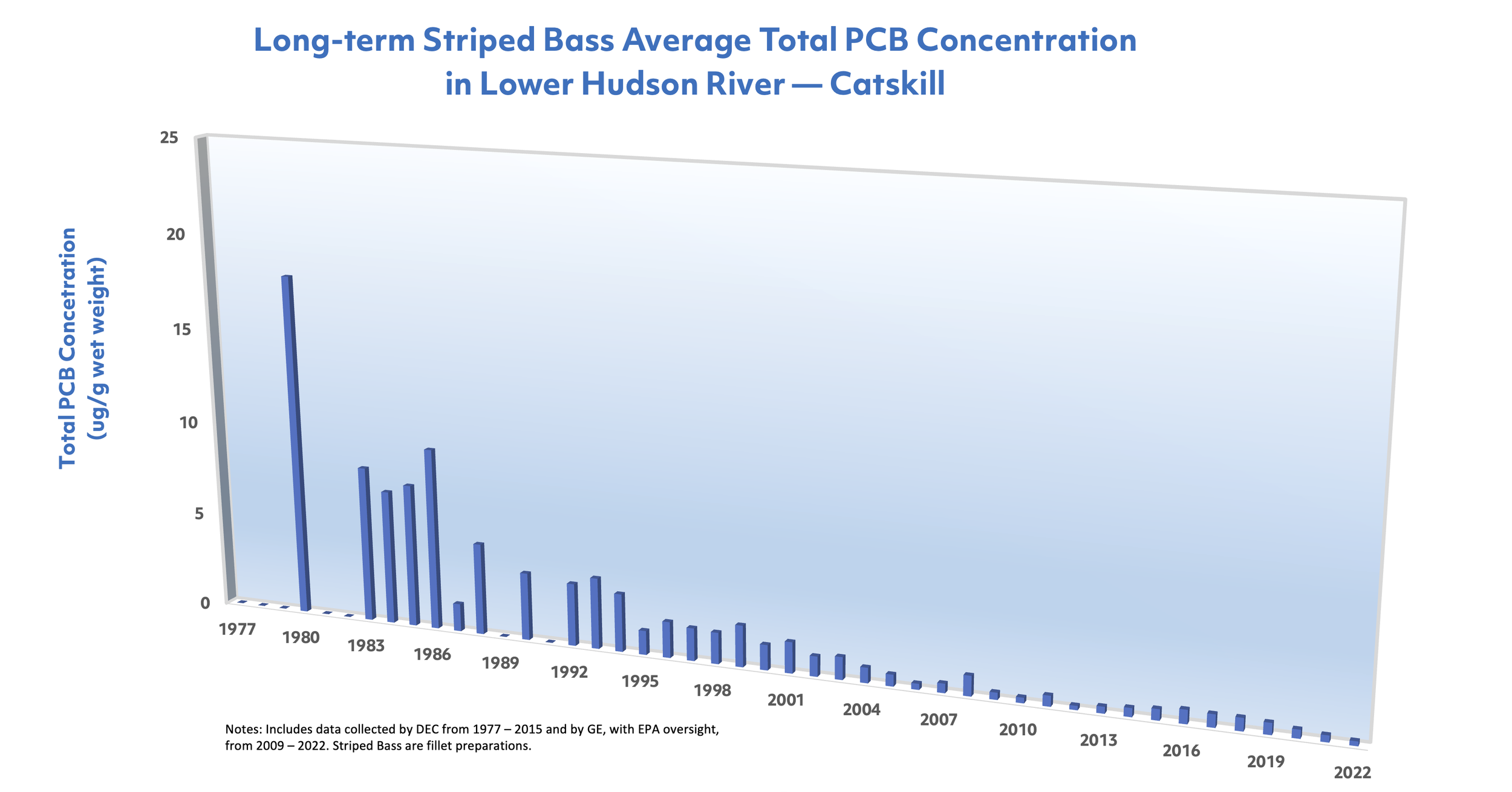
Fish data
65% Post-dredging
91% Decline Since 1990,
PCB levels in Upper Hudson FISH
PCB levels in Upper Hudson River sportfish, as weighted by species and river section, have dropped by 91% when comparing average levels from the 1990s to those levels observed in the fish collected in 2022. These declines are a result of GE’s work to reduce the PCBs entering the river from the company’s former plant sites in Hudson Falls and Fort Edward, the massive dredging project that occurred from 2009 to 2015, and natural recovery.
Since dredging has been completed, PCB levels in Upper Hudson sportfish have declined 65%, comparing a five-year average prior to dredging (2004-2008) to a three-year post-dredging average (2020-2022).
These data are presented in the charts below.
Source: GE data, gathered with USEPA oversight.
Source: GE data, gathered with USEPA oversight.
PCB levels in the Lower Hudson in striped bass are significantly lower than before dredging.
Source: GE data, gathered with USEPA oversight.
Source: GE data, gathered with USEPA oversight.
Source: GE data, gathered with USEPA oversight.





